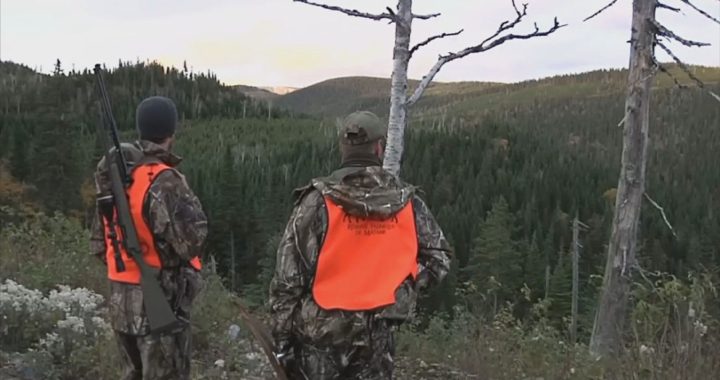
Jereme Brooks sits in a cafe in downtown Vernon on Okanagan territory. Photo: Kelsie Kilawna/IndigiNews
Jereme Brooks says he’s feeling fortunate to have a voice in the B.C. Law Society tribunal’s process as the first syilx person to serve as a public representative.
He was invited to accept the position in October, after being interviewed by a panel of jurors. He’ll be responsible for sitting alongside lawyers on a panel, hearing allegations against lawyers and helping to decide on appropriate disciplinary measures.
As far as he knows, he’s the first syilx person to hold this position.
“I know that the Law Society is also working on doing more restorative actions, and evolving in that way. So I’m hopeful to be part of that.”
Brooks grew up in Tk’emlups (Kamloops, B.C.) before moving to the coastal territories, where today he works as the child protection program manager for Mediate BC, a non-profit that works in collaboration with B.C.’s Ministry of Children and Family Development (MCFD).
“I’m just an old street kid,” he says. “But I’m not embarrassed about anything because that’s how I got here.”
Working with families from an Indigenous perspective
Brooks tells IndigiNews he’s spent much of his life working with youth and families — and he’ll be bringing this experience to bear in his new role as a public rep.
In 1995, he started his career as a youth worker in New Westminster, B.C., according to a blog he wrote for Mediate BC last year.
“I wanted to do something meaningful. I knew that I wanted to be as good as the good youth workers I’d met while I was a Street Kid, and I wanted to make it so that kids were protected from the people, places and things that seek to do them harm.”
He says he’s worked for MCFD as a caregiver for children who have been removed from their families, and in 2012, he says he became a child protection mediator after his wife encouraged him to apply and go through the training.
According to the provincial government, “mediation can help people to agree on what’s best for children without having to go to court.”
They don’t “take sides or make decisions about a case.” Rather, their role is “to bring parents, child welfare workers and others together” and to “encourage people to find common interests and work towards a mutually acceptable solution that meets the child’s needs.”
Brooks says he “grew up scared of social workers.”
“When I started on the child protection roster, the first question my Mom asked was ‘Do you get to talk to the social workers?’” he wrote in the blog for Mediate BC.
“It struck me that her experience was that there wasn’t the ability to have that type of discussion between parents and social workers that we now see as standard practice, especially in mediation.”
There’s since been “a huge shift in practice,” he says, adding that “there’s still a long way to go.”
Historically, there also “wasn’t a lot of colour,” in child protection mediation, he adds. ”It’s not [that] the people set out to create this really white industry or very male industry — it just was what it was.”
But this is changing, too.
“They needed Indigenous mediators because more than half of the kids in care are Indigenous,” he explains, adding that his personal approach is rooted in an Indigenous way of being.
“I’ve been calling my style ‘my grandma’s table’ for years,” he says. We’re “moving away from that very institutional framework of ‘it has to be [like] this.’
“There are some families that always walk with a limp, but that’s okay. That’s [the] community standard. The child protection standards are different.”
He’s seeing the system change as Indigenous communities assert their jurisdiction over children and family services — and he notes that change is inevitably going to be messy.
“You’re seeing that in different places now where communities are taking a more active and hands-on role in asserting their authority in child protection situations.”
In 2020, Brooks became Mediate BC’s child protection mediation program manager, and as far as he knows, he’s “the first Indigenous person to serve in this position.”
Over the past eight years, he says he’s mediated over 500 cases, and he’s now hoping to apply his lived experience as a public representative for the Law Society tribunal.
Getting past the ‘mainstream Canadian lens’
“Brooks was selected for appointment in the most recent recruitment process that is conducted by the Tribunal,” writes Jason Kuzminski, a lawyer and director of communications for the Law Society, in an email to IndigiNews.
While Brooks may be the first syilx public representative for the tribunal, he wasn’t the first Indigenous recruit, Kuzminski adds.
“Past recruitment resulted in the appointment of public panel members Linda Berg and Trudy O’Donaghey, both members of the Stl’atl’imx Nation, as well as appointment of Indigenous lawyers Ardith Walkem, of the Nlaka’pamux Nation, and Lindsay LeBlanc, who is a member of the Metis Nation. Walken has since been appointed as a judge of the Supreme Court of B.C.”
Brooks shares that he loves to help build functioning systems and this appointment goes hand-in-hand with his work in mediation.
“My involvement in those processes will help to better ensure that information is viewed in a more fulsome context and not just through the standard mainstream ‘Canadian’ lens,” he tells IndigiNews.
With a laugh, he says he’ll do his best not to “mess it up for everybody.”











